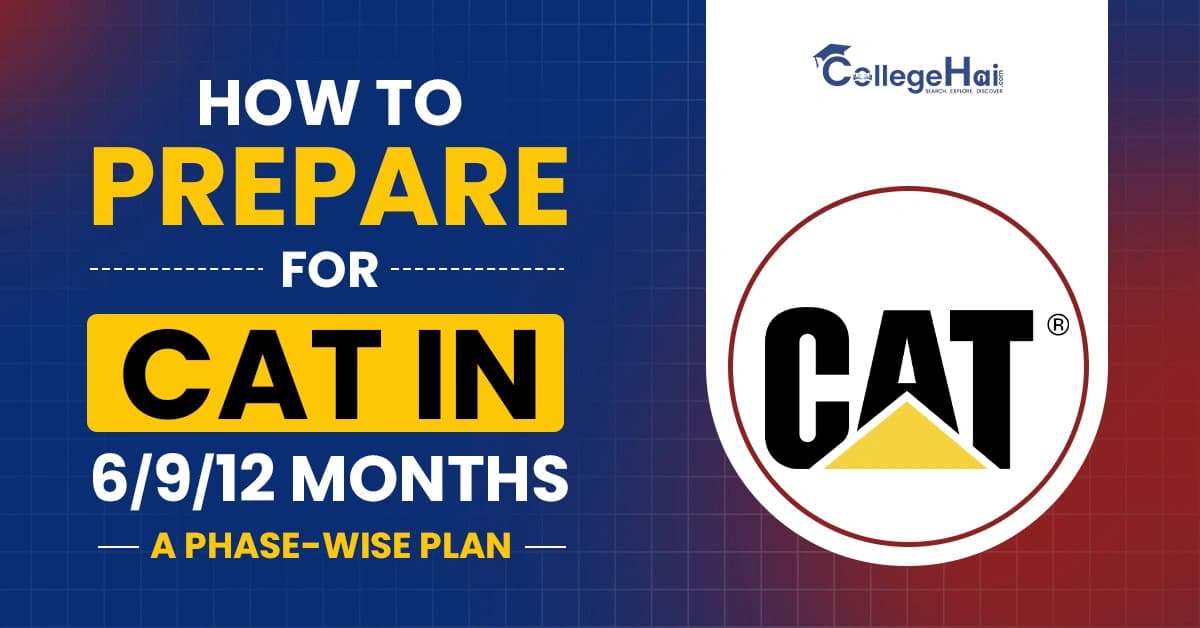Struggling to choose among postgraduate management courses, like an MBA, PGDM or MMS? Worry no more! This blog will deeply dissect and explain the major characteristics, distinctions, and advantages of each program—MBA, MMS, and PGDM—to enlighten management students.
First of all, Management knowledge is the main factor to help any company get the desired profit, but this is not as simple as it seems. Each of those educational programs can be found as a postgraduate degree or a postgraduate diploma. A lot of students cannot decide which between MBA vs PGDM vs MMS is better and in consequence, they become confused and hesitant.
No doubt, Master of Business Administration (MBA) remains the most favoured option of interdisciplinary studies, with almost 800,000 candidates applying for the top universities each year. It equips one with a wide range of management and administrative skills. On the other hand, MMS, or Master of Management Studies, concentrates its attention only on the essential management concepts.
Meanwhile, PGDM, which is a postgraduate diploma, is based on the fundamental concepts of MBA and is reputed to have a mostly short-term and dynamic curriculum. Understanding the differences through aspects like course structure, practical orientation, job opportunities, and qualification norms, this manual is a great help for a wishful career in management to decide wisely depending on employment goals, study habits, and future dreams.
Key Differences: MBA vs PGDM vs MMS
Understanding the key characteristics that distinguish MBA, PGDM, and MMS will help you figure out which program is most suitable for your educational qualification and professional goals. Here is a comparison of their syllabi, length, entry criteria, and choices for specialisation to make their fundamental differences more visible.
MBA programs are usually based on a two-year course structure with foundational courses during the first year and electives in the second, requiring the students to complete graduation and clear all eligibility exams like CAT, MAT, etc.
PGDM programs offer a flexible curriculum combined with experiential learning processes and may require work experience. Entrance tests for these programmes are CAT, XAT, GMAT, etc.
MMS programs, mainly offered by colleges in Maharashtra, are of two years duration but are required to be entered through entrances like MAH-MBA CET, etc, emphasising core courses in business disciplines, with specialisations appearing in the second year. This overview is effective for students to make an informed choice on their academic profile, career goals, choice of specialisation, etc.
The table below offers a brief comparison of the three major management programs in India, i.e., MBA, PGDM and MMS. It explains their fundamental differences in course structure, duration, eligibility criteria, specialisation options, etc.
General Eligibility Criteria for MBA, MMS and PGDM Programs

It is quite helpful to know the eligibility requirements for each MBA, MMS and PGDM program even before you put in an application. In this section, the focus is on educational qualifications, job experience requirements, and the exams that one needs to take, thus providing you with an idea of how prepared you are to get accepted into these top-level management courses.
MBA: MBA programs require a bachelor's degree and a minimum percentage of marks. For MBA admission, CAT is the most prominently accepted entrance exam. Work experience is not compulsory in these courses. These courses are most suited for the fresh graduates who look for a well-reputed university-affiliated management education with a broad variety of subjects to choose from and study.
PGDM: Most of the PGDM courses require a bachelor's degree along with work experience in relevant areas. The latter is imperative in the case of the premier institutes. For this purpose, they admit students through various tests like the CAT, XAT, GMAT, GRE, etc. These courses lay most emphasis on the practical side, on readiness for working in industry, and a flexible type of program for study. These therefore are apt for those in service and looking for specialised and application-oriented management education.
MMS: Mere administrative courses like the MMS need a bachelor's degree and qualifying for the entrance examination prescribed in accordance with the state or university where the degree is sought. Sometimes a degree of relevant experience is needed. The chief emphasis of these courses is that they revolve around core courses in business administration with a regional or professional trend. These are mostly fitted for those requiring a full-time and regimented type of management degree, giving such a degree from a recognised academic body.
Refer to the table below for more information.
Exams Required for MBA, MMS, and PGDM
Management students looking for an MBA, MMS, or PGDM program in India, figuring out which admission test to take is the first step. These programs admit candidates based on the results of various tests held at both national and state levels, which are considered by different schools and districts.
One of the significant roles of entrance exams is to provide access to programs in management. In this article, here is an explanation of the various exams at the national and state levels, which are the prerequisites for the top-ranked universities and colleges that offer MBA, MMS, and PGDM.
National-Level Entrance Exams
The various national-level exams accepted include the Common Admission Test, Xavier Aptitude Test, Common Management Admission Test, Management Aptitude Test, Graduate Management Admission Test, and NMAT by GMAC.
The Common Admission Test is the most popular exam. This leads to the Indian Institutes of Management and many other top business schools in India. The Xavier Aptitude Test is another significant exam whose scores are mainly considered by XLRI and its associated institutes.
The Common Management Admission Test, which is the National Testing Agency's offering, is a very popular test among business schools. The Management Aptitude Test, organised by the All India Management Association, also acts as a very popular entry point for management programs all over the country.
One of the best options for a candidate who desires worldwide recognition and aims at any of the global business schools is the Graduate Management Admission Test. On the other hand, NMAT, by NMIMS University, is the test that can open a student's way to get into an attractive institute. Furthermore, there are a few more exams like SNAP and IIFT that are designed for specific institutions, e.g. the Symbiosis group and the Indian Institute of Foreign Trade.
State-Level and Other Entrance Exams
Besides those conducted at a national level, several other entrance tests are held in different states and universities. The Common Entrance Test in Maharashtra or MAH-CET is extremely important for MBA and MMS admissions within the state. Moreover, the AIMS Test for Management Admissions and the ICFAI Business School Entrance Test, IBSAT are two other noteworthy examination opportunities for admission in management departments.
Job Opportunities in MBA, MMS, and PGDM Programs
MBA, MMS, and PGDM programs normally open up management and administration career avenues, with the specialisation selection determining the specific area of work. Out of these, an MBA has the maximum number of specialisations. Thus, the job opportunities of the graduates varied.
Being recognised for its practical approach, a PGDM is of equal value in the market and is often able to command a higher average salary position because it focuses on the development of practical skills in the core areas like marketing, finance, and analytics. A PGDM graduate also enjoys a similar pathway as an MBA student to pursue a PhD degree.
On the other hand, MMS is a different entity from MBA and PGDM as it is focused on management techniques and strategies; therefore its graduates are able to make up the senior management team, although they might be limited in certain administration-driven jobs. Refer to the table given below to know about the various job opportunities of MBA, MMS and PGDM.
ROI for MBA, PGDM, and MMS Programs
The fees for MBA programs tend to range anywhere between INR 2 lakhs to 35 lakhs. They also provide the highest salary opportunities for students, where the average salaries tend to be anywhere from INR 30 to 50 LPA with maximum salary packages reaching INR 125 LPA.
In comparison, PGDM programs have fees that range anywhere from INR 10 lakhs to 27 lakhs. The average salaries for PGDM programs fall under the range of INR 15 to 32 LPA while maximum salary packages can reach up to INR 80 LPA. MMS programs are typically the most economical option when comparing fees with fee ranges falling between INR 5 lakhs to 13 lakhs.
Average salaries for MMS programs fall within the range of INR 9 LPA - 26 LPA, with maximum salary packages reaching nearly INR 87 LPA. All three programs generally attract top-tier recruiters from major sectors including consulting, finance, technology, and FMCG. This table highlights the respective fee ranges, average salary packages and the top salary packages for MBA, PGDM and MMS programs and the top recruiters for each, respectively. It will aid aspirants in their understanding of the financial commitment and earning potential, as well as how it relates to connecting with recruiters in these high-demand programs.
Top Colleges offering MBA, MMS or PGDM
The table below provides a summary of the leading MBA, PGDM, and MMS programs, which is a consolidated list of some of the known and premier management institutes in India. The MBA section covers some of the best government and private colleges that are known for demanding academics and good placements. The PGDM section of the table includes institutes offering a flexible diploma program that is based on industry needs and has good links to the business world.
The MMS sector includes institutes that are well known, mainly in Maharashtra, that award university degrees in management, which target the regional and professional market. This table provides the aspirants with a sheltered view of the quality of leading options for the various types of management education.
MBA vs PGDM vs MMS – Which Should You Choose?
Choosing between MBA, PGDM, and MMS depends largely on your career goals and individual needs. Generally, an MBA is favored for its extensive range of specialisations and its ability to help graduates build careers that blend management skills with their technical or research backgrounds, ensuring they stay connected to their core expertise.
In contrast, PGDM and MMS focus more intensively on management and administration, making them ideal for those who want a pure management education. Deciding on the right program requires careful consideration of your personal aspirations and professional requirements. Ultimately, all three qualifications offer comparable job opportunities and career prospects; the best choice hinges on your career vision and commitment to your chosen path.
About the Author

Content Writer



